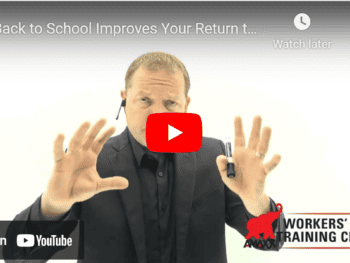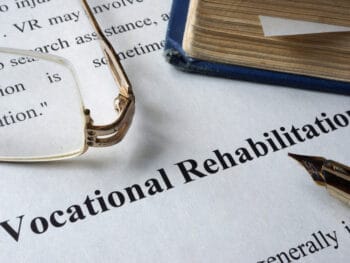A key component to an effective workers’ compensation program includes an emphasis on returning injured employees to work in a manner that mitigates cost and exposure. This includes, but is not limited to, return to work at the employee’s pre-injury position, return to work at the pre-injury employer in a modified capacity, or return to work in a different setting.
Click Link to Access Free PDF Download
“13 Research Studies to Prove Value of Return-to-Work Program & Gain Stakeholder Buy-In”
Components Of An Effective Program
An effective program all starts with a philosophy that meets the objectives of the employer and the needs of the injured employee. Contrary to popular belief, most injured and disabled workers want to go back to work in some capacity. Emphasis should be placed on “function” that makes life as normal as possible for the party seeking work—the employee.
Job Description
Avoid job descriptions that are not flexible and do not allow for work place accommodation. This is especially important for not only employees who have permanent work restrictions, but for those who are expected to have increased function as they recover. It is also important to avoid descriptions that are not clear and concise. The job description should also be accurate and legitimately reflect the necessary work duties of the position.
Clear Communication And Expectations
In any return to work situation, there is friction on both sides of the equation. For managers, it is important to listen to the needs of the injured worker and understand what issues they may have with their new position. More often than not, the issue is not with the position itself, but other underlying issues such as reduced income, providing the basic needs of an employee adjusting to their new line of work and fears they may have of re-injury. It is also important that expectations of the employee are communicated with the worker in a non-threatening manner.
Know the Applicable Laws
Dealing with any person who suffers from a work injury calls for detailed knowledge of the applicable state and federal laws. Each state had different rules governing return to work and job search issues. Relying on a vocational expert to guide you on these matters can mitigate exposure.
Ignorance of the law is also never an excuse. A complete understanding of federal laws such as the Americans with Disabilities Act (ADA) and the Family Medical Leave Act (FMLA) are essential. It is also important to understand that sometimes these laws may conflict with a state workers’ compensation law.
FREE DOWNLOAD: “13 Research Studies to Prove Value of Return-to-Work Program & Gain Stakeholder Buy-In”
Cover the Intangibles
When an employee is injured at work and receiving Temporary Total Disability (TTD) or Temporary Partial Disability (TPD) benefits, they are only receiving a percentage of their pre-injury wage. However, the injured worker is left to deal with 100% of their pre-injury financial obligations. Part of an effective return to work program recognizes that most workers are dealing with the stresses of everyday life and their injury. As a result, a necessary component of any program should also include directing disabled employees to programs and resources in their community that will allow them to put food on their table, keep the utilities operating and a roof over their head.
Most return to work programs fail to recognize these intangibles that raise morale and buy goodwill. By thinking outside the box, effective programs can take steps to reduce the costs associated with the most expensive parts of a workers’ compensation program.
Author Michael B. Stack, CPA, Principal, Amaxx Risk Solutions, Inc. is an expert in employer communication systems and part of the Amaxx team helping companies reduce their workers compensation costs by 20% to 50%. He is a writer, speaker, and website publisher. www.reduceyourworkerscomp.com. Contact: mstack@reduceyourworkerscomp.com.
©2014 Amaxx Risk Solutions, Inc. All rights reserved under International Copyright Law.
WORK COMP CALCULATOR: http://www.LowerWC.com/calculator.php
MODIFIED DUTY CALCULATOR: http://www.LowerWC.com/transitional-duty-cost-calculator.php
WC GROUP: http://www.linkedin.com/groups?homeNewMember=&gid=1922050/
SUBSCRIBE: Workers Comp Resource Center Newsletter
Do not use this information without independent verification. All state laws vary. You should consult with your insurance broker, attorney, or qualified professional.















